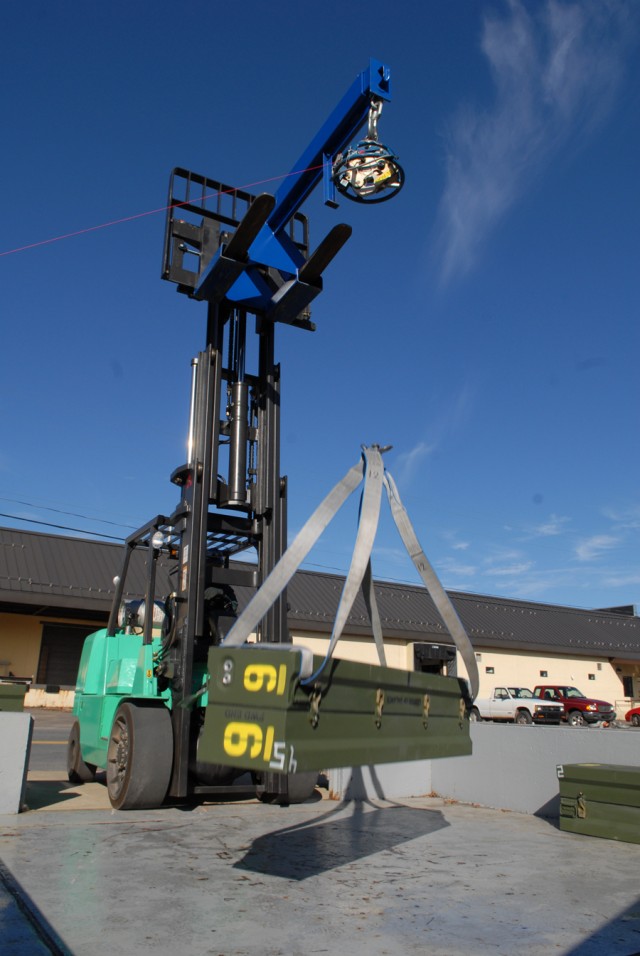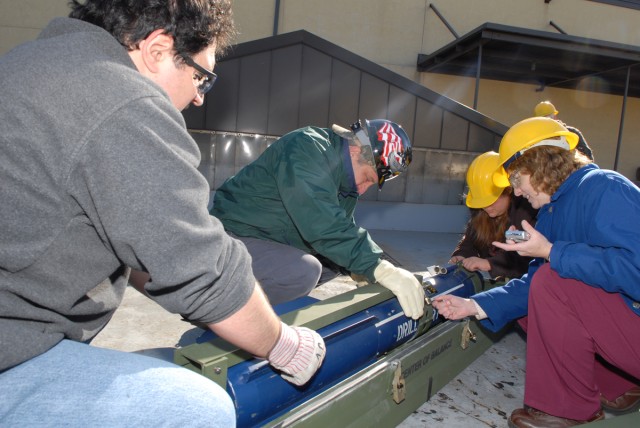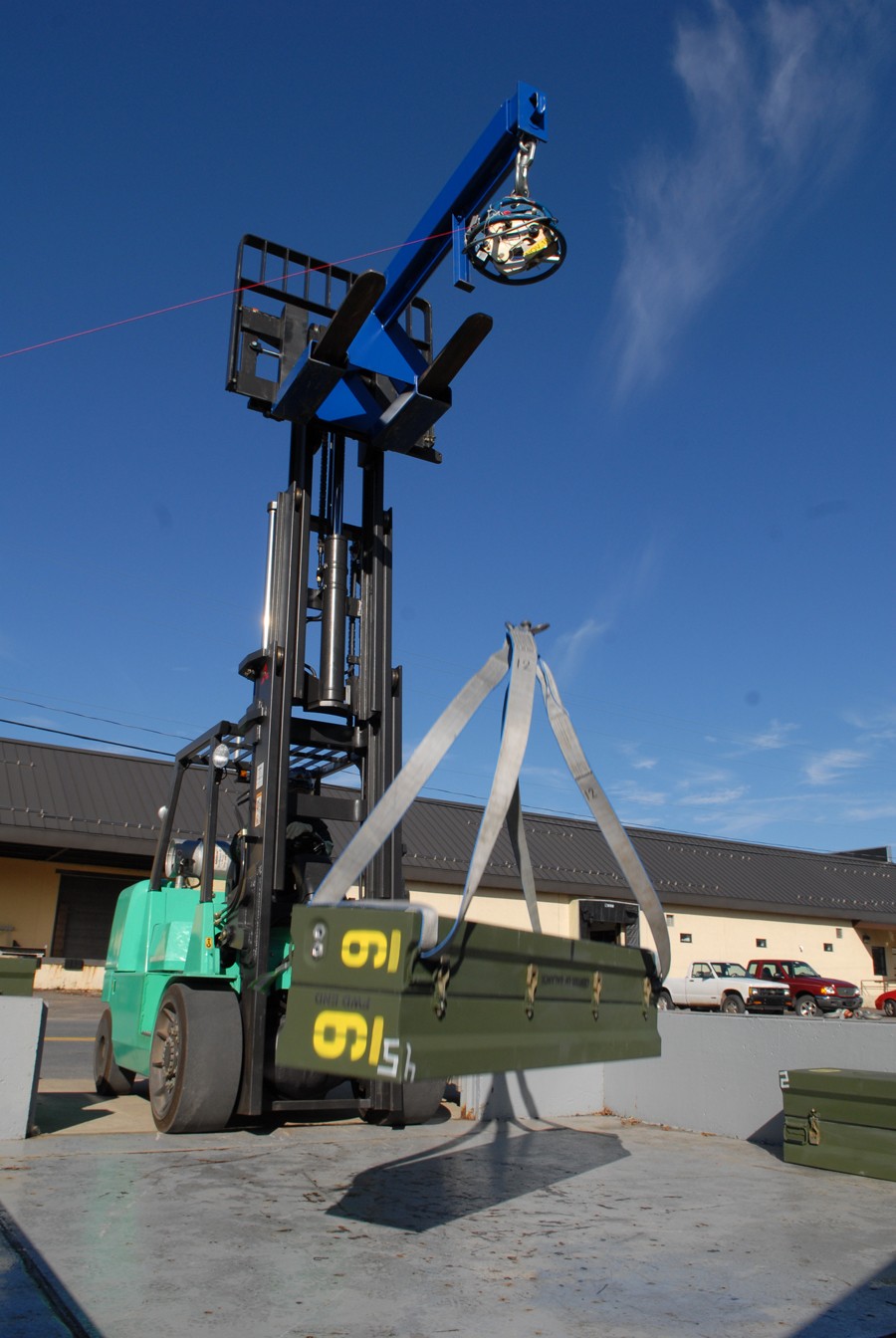TOBYHANNA ARMY DEPOT, Pa. - LOGSA's packaging center recently worked with private industry to test the hazardous material (HAZMAT) packaging used to ship the Hellfire Missile.
This was the first HAZMAT certification testing the Logistics Support Activity Packaging, Storage, and Containerization Center (LOGSA PSCC) has done for private industry under the auspices of the U.S. Code, which allows the use of excess Defense Department test equipment for such purposes. The container is being manufactured by Precision Metal Industries (PMI) for Lockheed Martin.
Test equipment is considered excess if it is not being used when the customer needs it.
"As a new manufacturer, PMI is required by law to have the packages certified before use," said Charlotte Lent, HAZMAT packaging testing team leader. "This was a test of the production run of that particular box and the certification is good for two years."
Once contract requirements for both parties were met, the manufacturer shipped the packaging items, including an inert missile, to Tobyhanna for testing. Using the inert missile, testing officials were able to judge the correct weight, proportions and balance of materials during three test procedures. The container underwent vibration, drop and stack tests over a two-week span.
There are performance testing standards that have to be met to ship any HAZMAT, according to Sarah Gedrich, mechanical engineering SAIC contractor in support of LOGSA. She explained that the tests simulate conditions often encountered during transport using a variety of vehicles.
"PSCC uses a pass or fail criteria for each test-bottom line, the package cannot leak the HAZMAT and there can be no deterioration to affect safe transport," Gedrich said. "In HAZMAT, you cannot expose the handler, vehicle or the environment."
Testing officials use a vibration table to replicate transport over rough surfaces or encountering quick stops which can cause the load to shift. During the drop test, the container is dropped on all four sides and a corner from about six feet to ensure it remains intact. The stack test simulates the weight of packages stacked on top of each other to make sure they can withstand the load.
The Hellfire Missile container manufactured by PMI is a copy of another container that's been around for many years, Lent explained, adding that although it's a proven container, this is the first time the company has manufactured the design.
"The container we make requires a substantial amount of testing to qualify to be the manufacturer of this product," said Greg Wilson, president of PMI. "At the end of all the testing the container must remain airtight so that no moisture ever gets inside to affect the guidance system on the missile. We were successful in that testing and passed the requirements the first time."
PSCC earned accolades from the manufacturer for maintaining a high standard of performance throughout the testing process.
The engineering and testing facilities represent one of the largest applications testing facilities in the United States, Lent noted. The facility is certified by the International Safe Transit Association and provides complete packaging design validation testing capability in accordance with testing prescribed for government shipments.
"Charlotte Lent and her organization were incredible to work with," Wilson said. "I take my hat off to PSCC for their service, communication and pricing. I would recommend them to anyone that deserves good service, and I give a special thanks to everyone for their input and knowledge to help us with a specification that was new to us."
Wilbur explained that host units provide everything from equipment and software to ghost images. "It's the team's job to pull it all together to work within the installation's environment," he said.
Tobyhanna Army Depot is the Defense Department's largest center for the repair, overhaul and fabrication of a wide variety of electronics systems and components, from tactical field radios to the ground terminals for the defense satellite communications network. Tobyhanna's missions support all branches of the Armed Forces.
About 5,600 personnel are employed at Tobyhanna, which is located in the Pocono Mountains of northeastern Pennsylvania.
Tobyhanna Army Depot is part of the U.S. Army CECOM Life Cycle Management Command. Headquartered at Fort Monmouth, N.J., the command's mission is to research, develop, acquire, field and sustain communications, command, control computer, intelligence, electronic warfare and sensors capabilities for the Armed Forces.




Social Sharing